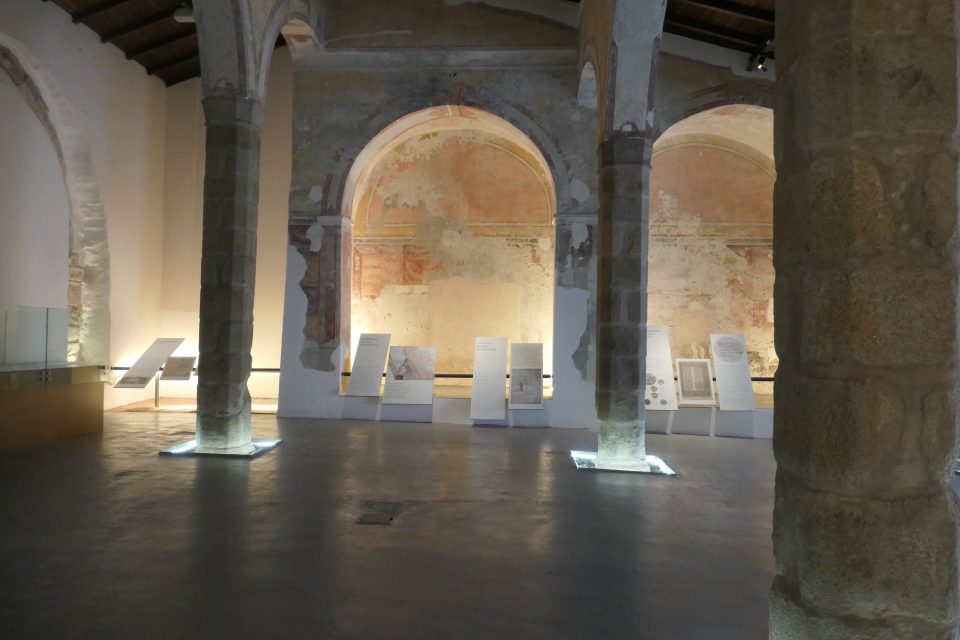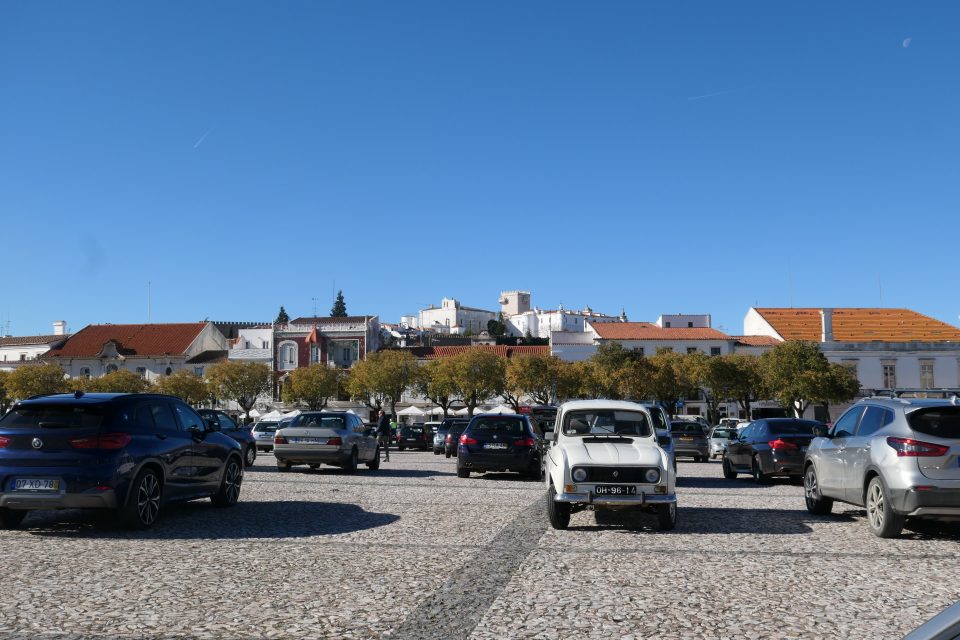NOVEMBER 26, 2021: The day began in Elvas. Unlike last Friday, when we had lots to finish before Shabbat, today was much slower paced. In general, the last few days have been much less hectic. Basically, when I planned the trip, I knew which cities I wanted to spend Shabbat in. So last week, we needed to reach Belmonte, with lots to see on the way. This week, we need to reach Evora, with much less to do before we arrive there.
In Elvas, we checked out of our apartment, packed up the car, and returned to wander the streets of the old city. Yesterday when we arrived, it was pouring rain and cold. This morning we woke up to cloudless sunshine. It was going to be another warm, sunny day. Hallelujah!
The houses in Elvas are either white or yellow and almost all the doorframes have been redone. The chances to find any marks of New Christians seems impossible. I think this is going to be true from now on – this style of housing seems to be prevalent in all the south of Portugal. In general, this area offers much less to see Jewish-wise than further north, and as we continue south into the Algrave region, even less. Our last week in Portugal, in the Algrave region, will be much more about sightseeing and hiking, than working on Wandering Jew.

Praça da República – main square in the historic district of Elvas 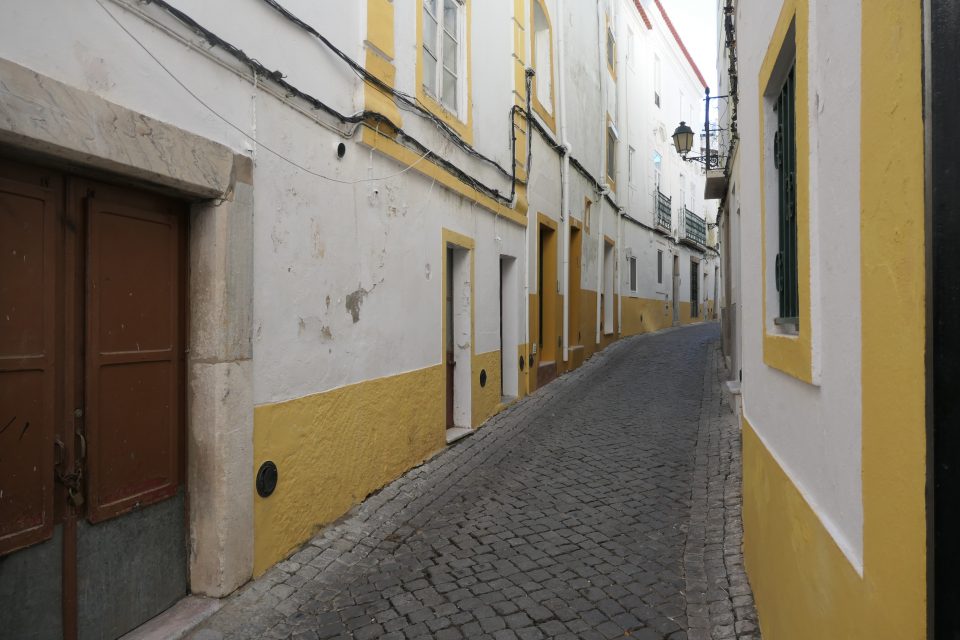
Street in the old Jewish quarter of Elvas
In Elvas, we went to visit the Casa da História Judaica – Jewish History House. You walk in and are immediately wowed by the place. This large room, built with 12 columns, was once the community synagogue. It is much larger than any of the old synagogues we have seen so far in Portugal. The Jewish community of Elvas was one of the largest in Portugal in the Middle Ages. Maybe about a quarter of the population of Elvas was Jewish. This amount further increased in 1492, after the expulsion from Spain. There were two Jewish quarters in the town. After there was no longer a Jewish community in Elvas, this building, the previous synagogue, was used as a butcher shop. The name of the street it is on is known as the Street of the Butcher, and above the entrance door of the building is a tile decoration of a steer.
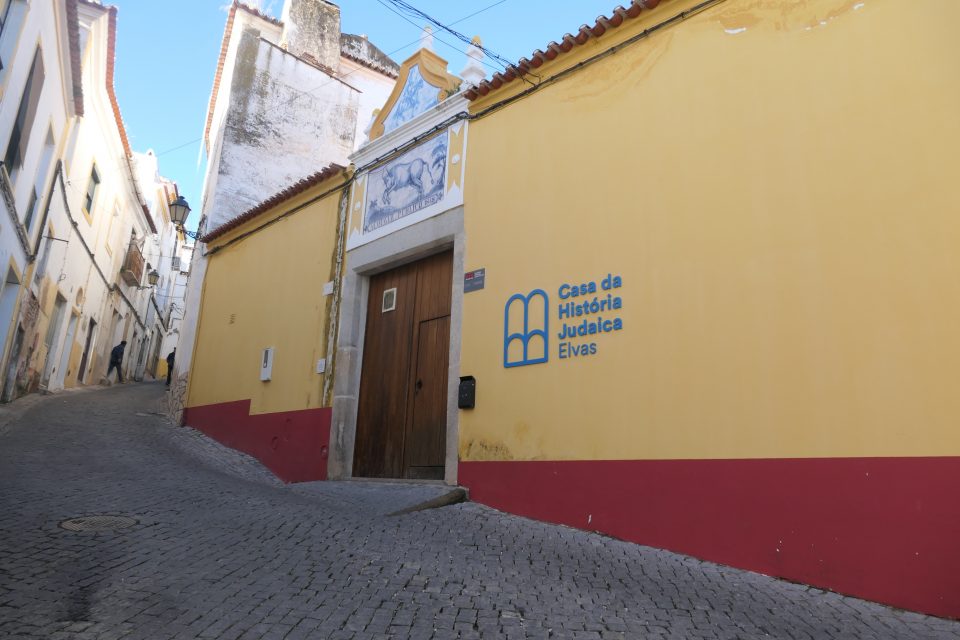
Jewish History House in Elvas 
After the synagogue was no longer used, it became a butcher shop – thus the sign over the entrance door
Unfortunately, all the displays in the museum were only in Portuguese. On one, with a timeline of the Jewish experience in Portugal, we recognized a photo of the ring that had been found in Marvão shown to us yesterday by Mano the Israeli. It said that is was from the 2nd century and hints at a Jewish presence in Portugal as early as then. One thing that I found interesting in this building, is that the decorations on the walls were painted to look like marble arches.
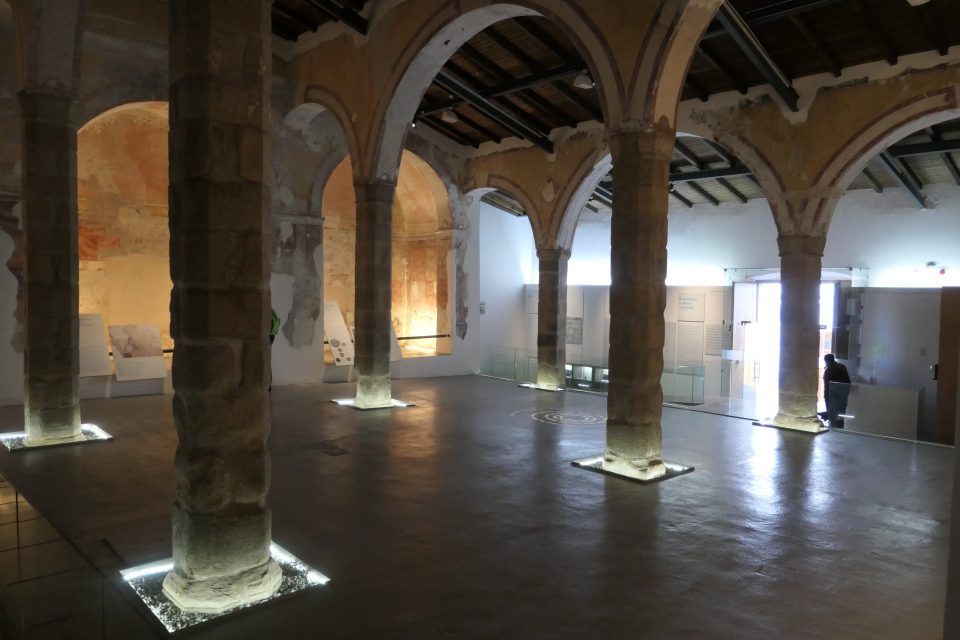
Inside the former synagogue 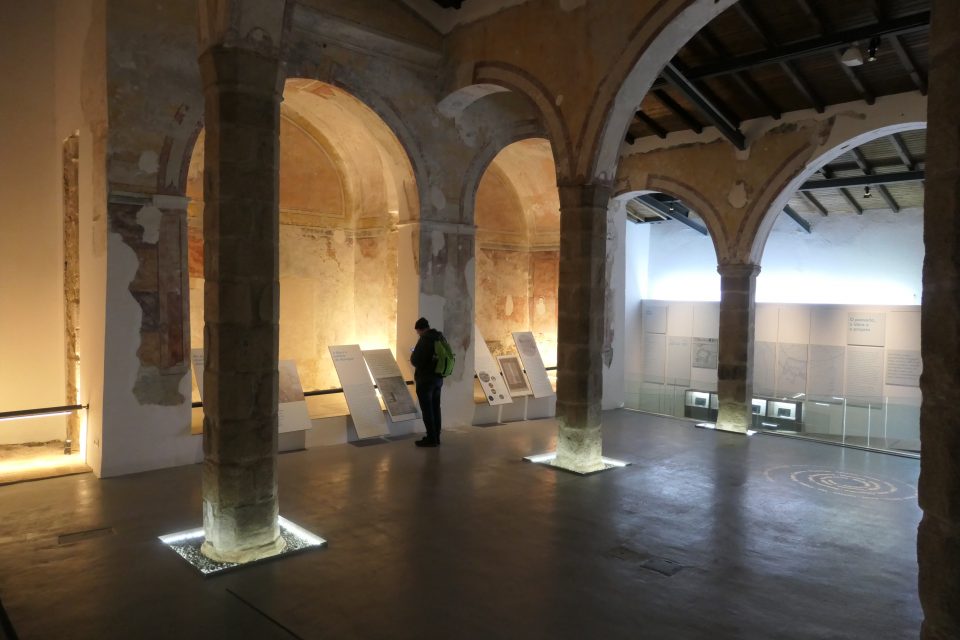
Mark reading the displays using the camera feature in Google Translate 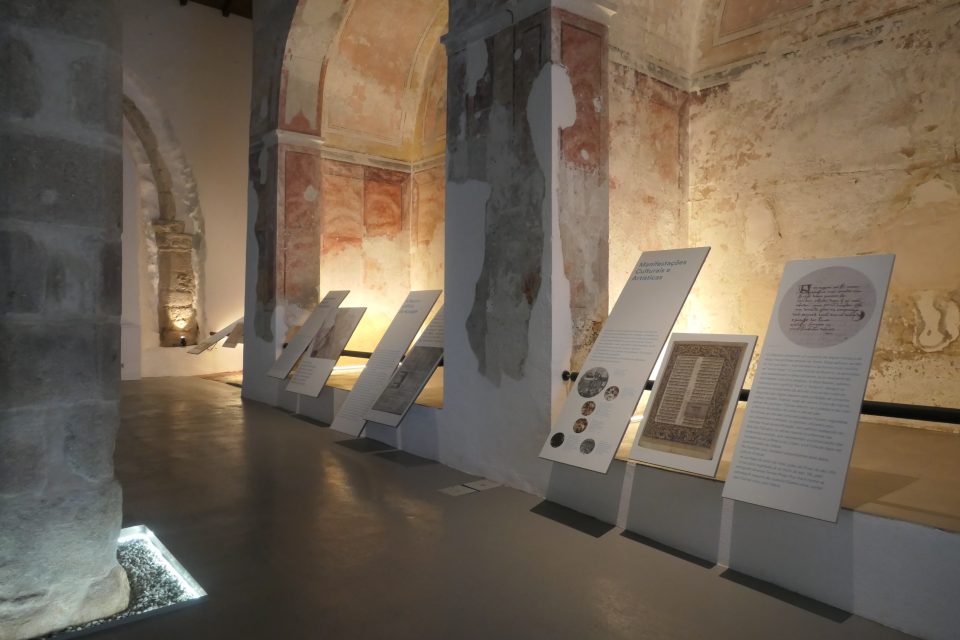
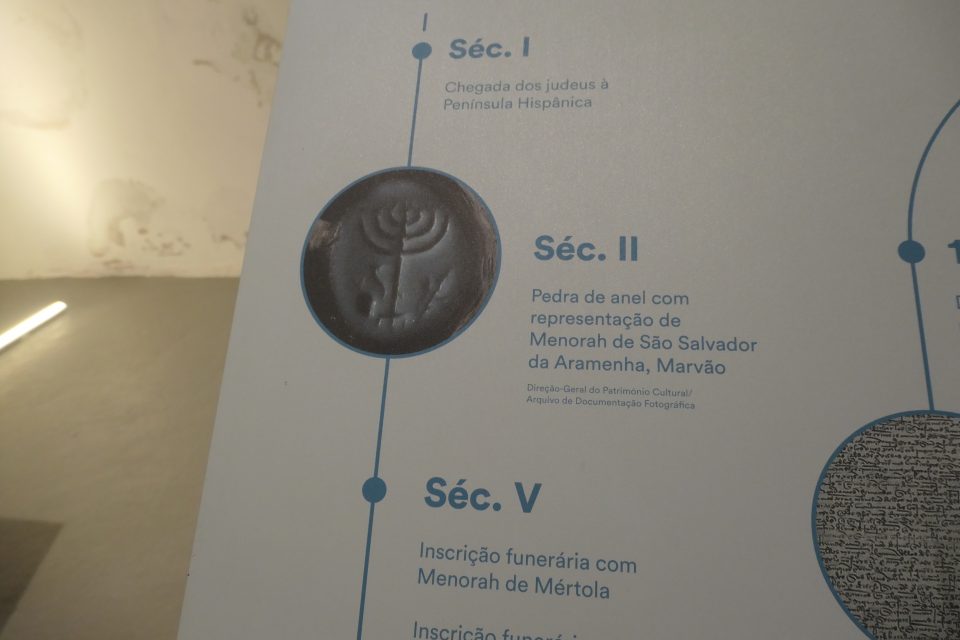
A picture of the same ring that Mano in Marvão showed us 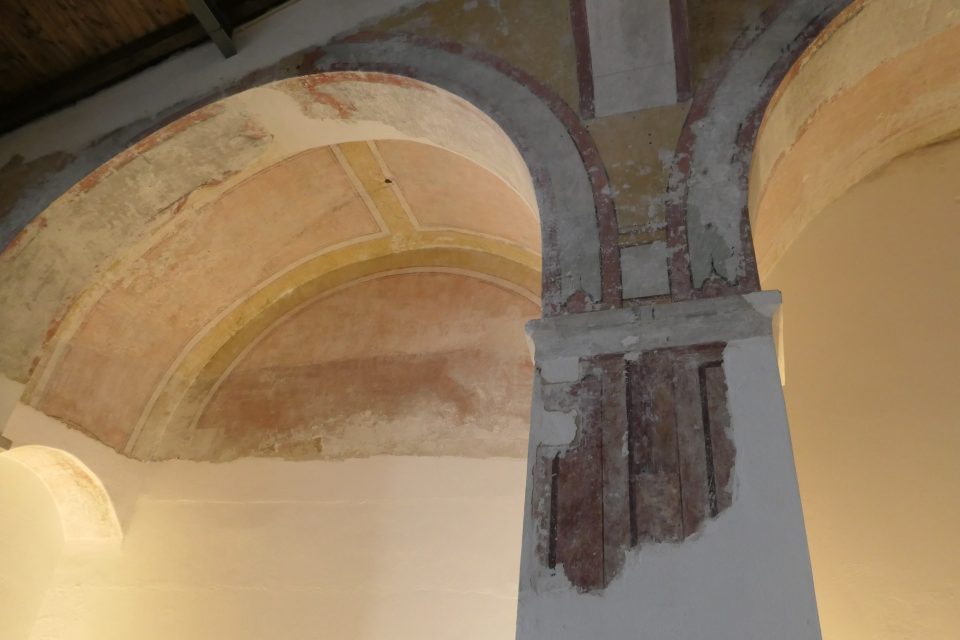
The decorations on the column and under the arches are painted
We returned to our car, and headed to our next destination, Estremoz. As we left Elvas, and we saw the city in the distance, I realized we had forgotten to visit the castle and large fort in Elvas. Being Friday, and needing to prepare for Shabbat, we did not return. I guess it is good to leave something for next time.
While the north of the country was mountainous, we are now in the region called Alentejo. This area is a large, mostly flat fertile plain with small hills. The land has many agricultural fields. Often it is covered with cork trees, widely spaced with sheep or cows grazing among the trees. Sometimes you see nothing but olive trees for miles and miles. Occasionally you see vineyards. Often you see bright yellow wild flowers carpeting the land.
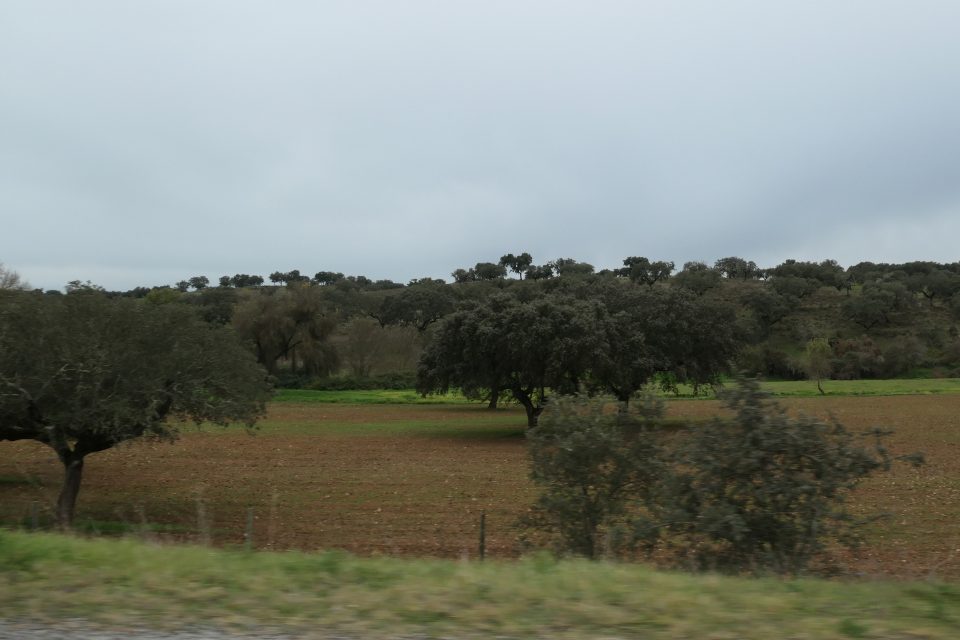
Fields of cork trees 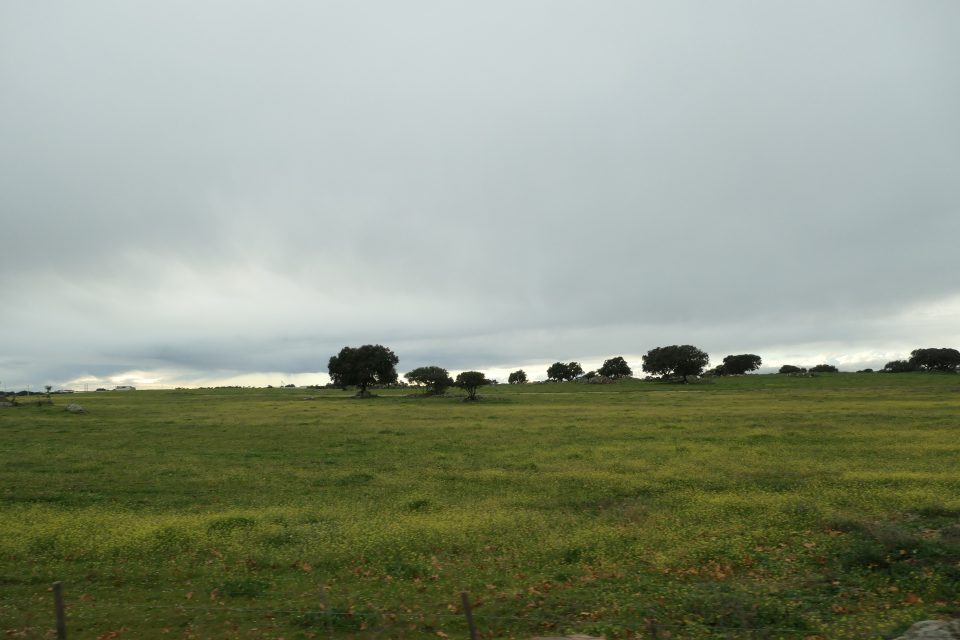
Yellow wildflowers 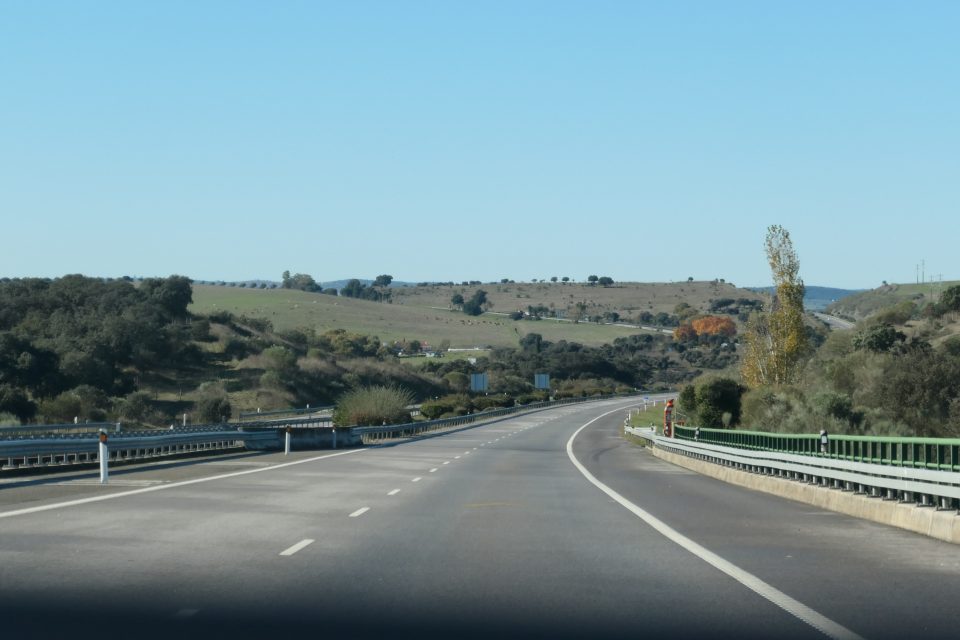
Typical Alentejo landscape 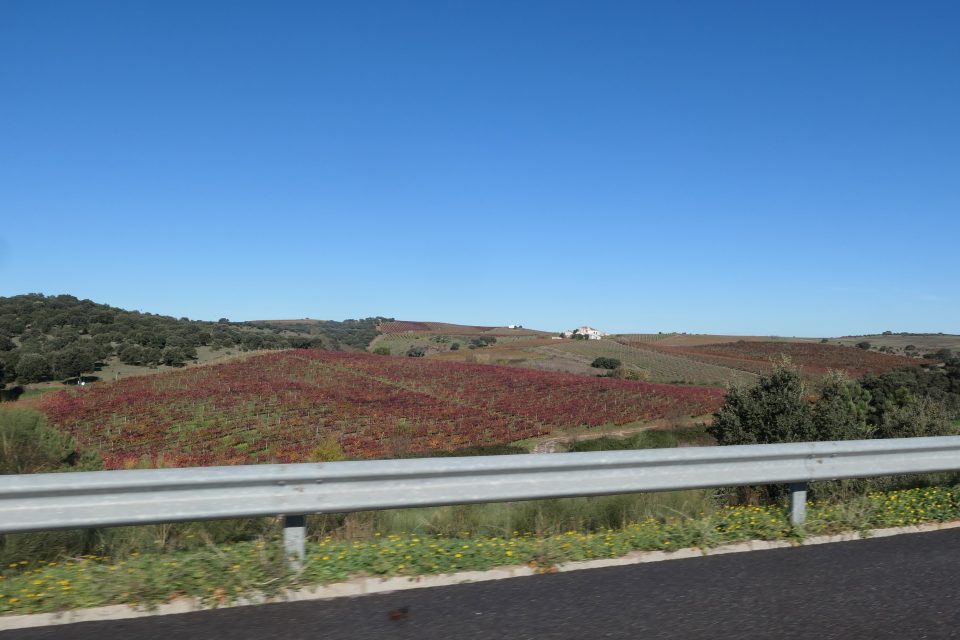
Large farmhouses scattered across the landscape
Our next destination, Estremoz, is a village, like Marvão in the 1000 Places to See Before You Die list. Marvão had been spectacular, so we had great expectations for Estremoz. What is special about Estremoz, is that is lies in an area where white marble is abundant. As you enter the village, which is actually more of a large town than a small village, you pass quarries where the marble is mined. Huge marble rocks are strewn about.
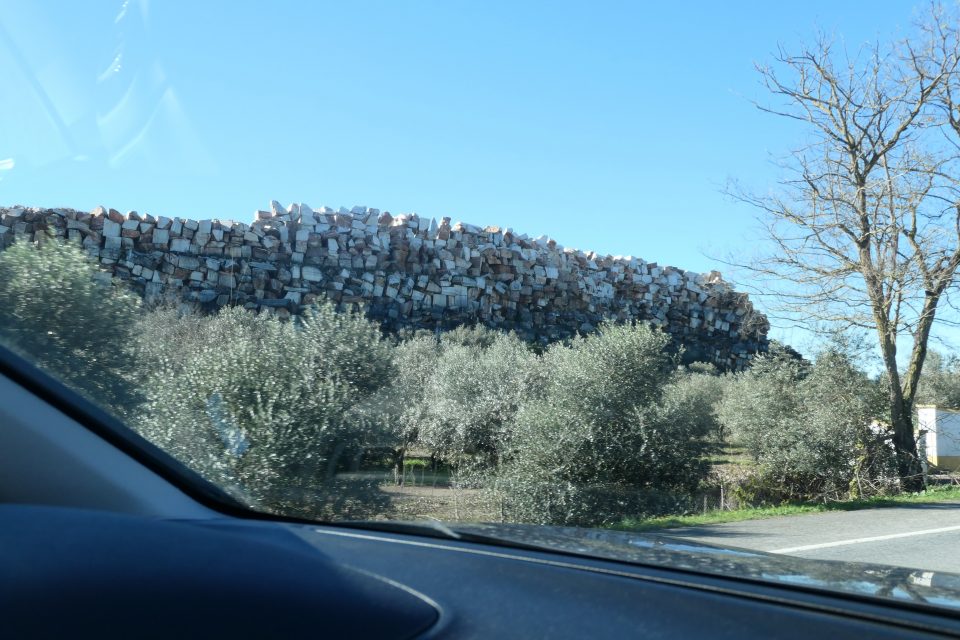
Huge pile of marble slabs 
Estremoz
The white marble adorns everything in Estremoz. Because of this, it has been called the White City. Many buildings are adorned with marble, the sidewalks and parking plazas are made from marble stones, and even the street curbs are made from slabs of marble.
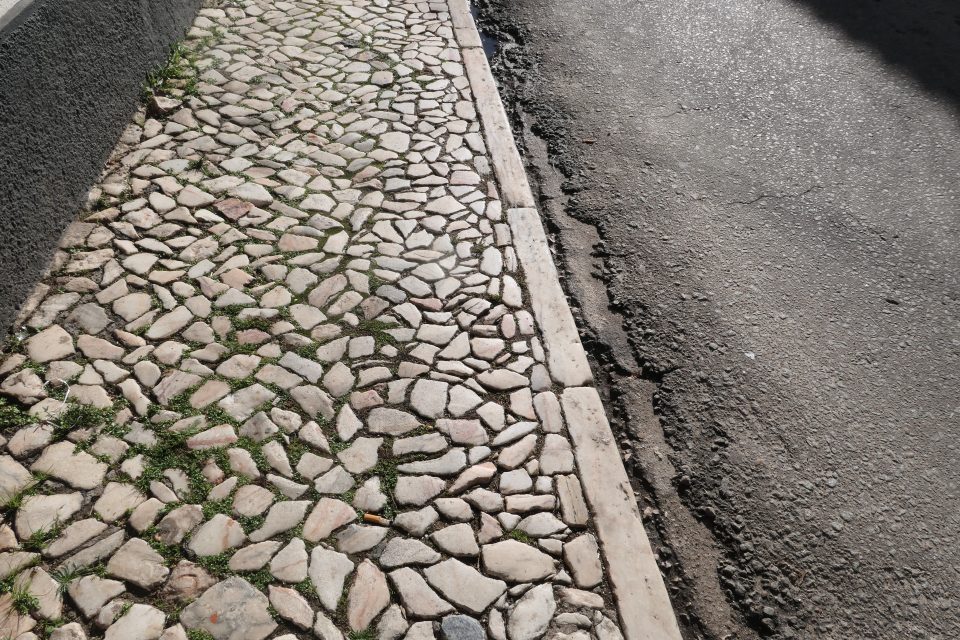
Sidewalks and curbs all made from the local marble
The city has two parts, the lower more modern part below the hill, and the castle and older houses on the hill. The city also has two walls, one surrounding the upper city, and another on the lower part. We parked our car in the lower part in a huge parking area in the middle of the town. From there we walked to the tourist information office.
On the way, we saw a bank that was open. We have stopped at banks in many of the towns we have visited. We received a 500 Euro note as a gift for this trip and have not been able to use it. No one will accept such a large bill. We have been going to banks, trying to exchange this for smaller denominations. Some turned out to be investment banks, others simply said no. Here in Estremoz, finally over three weeks into our trip, a bank has agreed to give us change. It took two tellers working on it, showing passports, signing documents, but it succeeded. At last, we were able to get cash we could use.
In the Network of Portuguese Jewish Quarters they have one entry for the whole Alentejo region, where they mention some towns that had Jewish populations. Estremoz is one of the towns on the list, but beyond that, in researching I found nothing else to suggest any evidence of this. At the tourist office, their English was not very good, and they obviously did not understand my question about the Jewish history of the town. Instead, they showed me a map and pointed out where all the churches and chapels are and wrote down until what time they are open. Dead end.
We made our way up the hill to the castle. Overlooking the town, is a large tower made entirely of white and pink marble – Torre das Três Coroas (the Tower of Three Crowns). It was built during the reigns of three Portuguese kings. This was our destination. It was currently closed, but we could see it from the outside. The views from the top of the hill were spectacular.
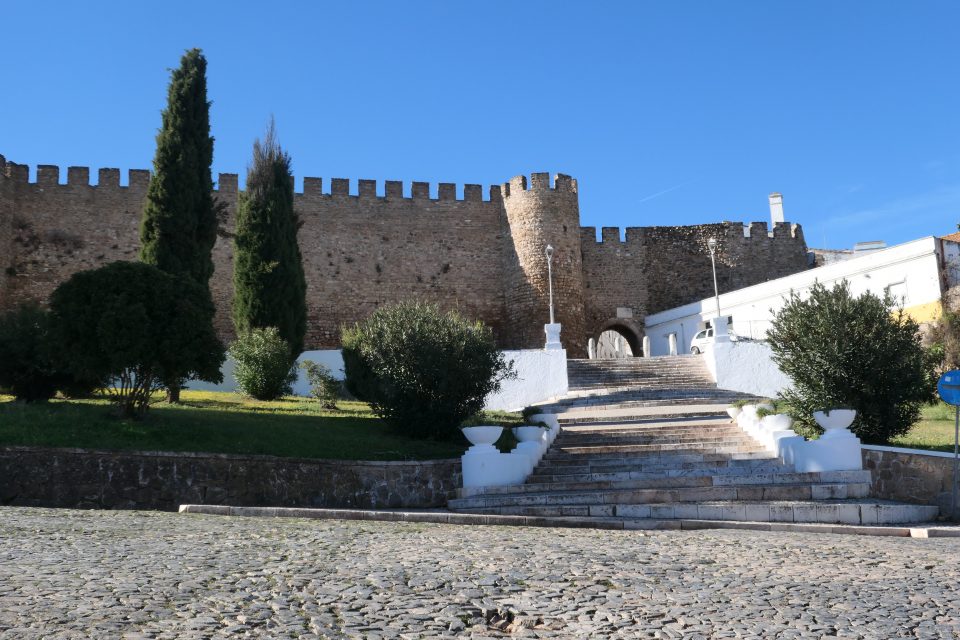
Gate to the upper part of the town 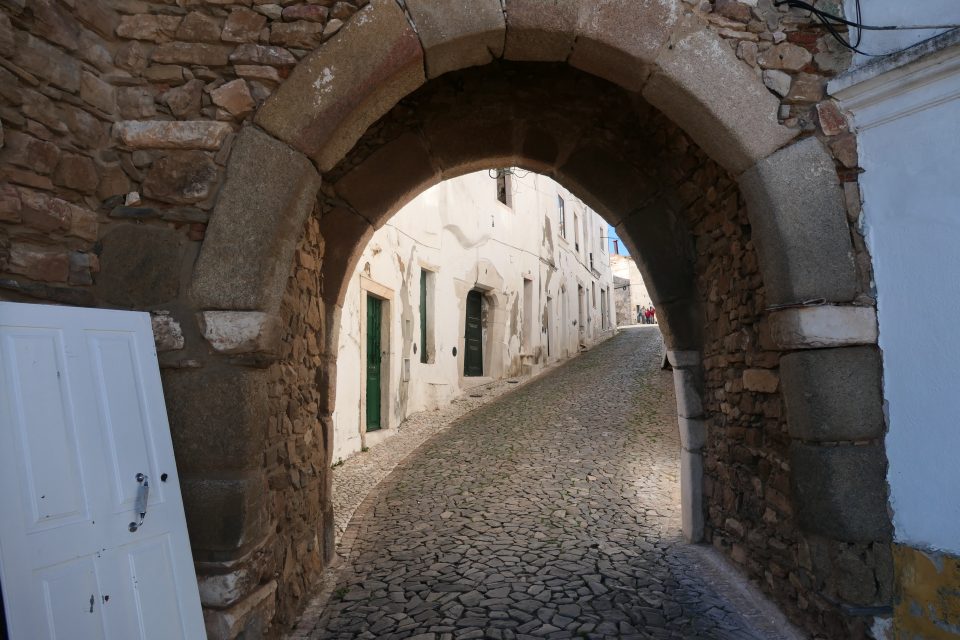
Entering the upper town 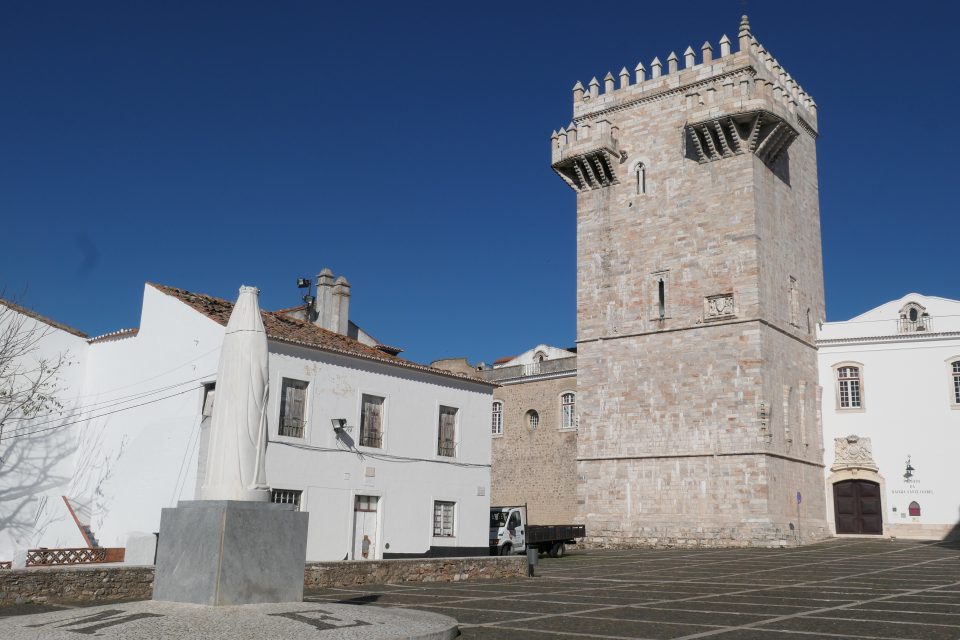
Torre das Três Coroas – the Tower of Three Crowns 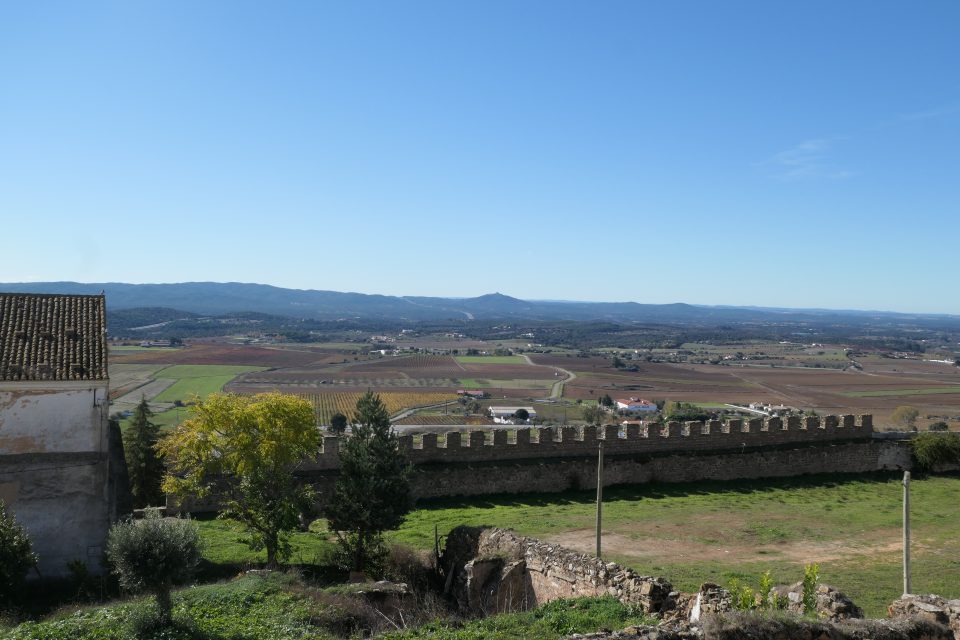
Views from the plaza in front of the tower
Leading out from the gate, there was a small group of older houses, and the main road was called Rue Direita. This is a name we have often seen in the Jewish Quarters. These house where also in the location of the previous Jewish Quarters we visited, right outside the castle gates, and we guessed that this might be the area the Jews previously lived in. We found no traces of such. Like in Elvas, the houses have been redone so that no original stones remain to be seen.
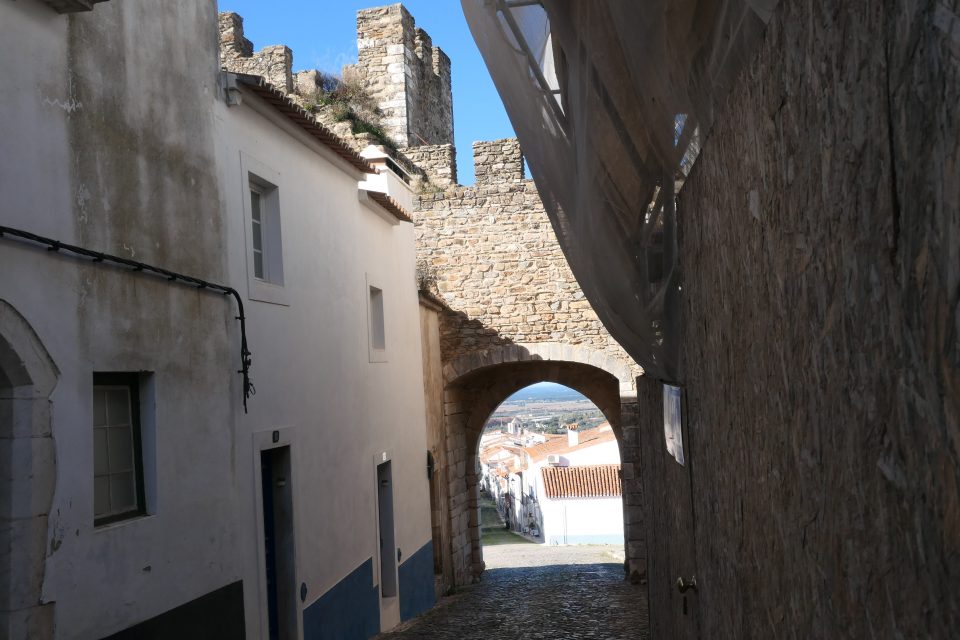
Maybe the street beyond the town gate was the Jewish quarter?
From there, we headed back down to our car in the lower town. We passed a beautiful building, adorned with marble of course, and Mark saw that this was a Doll Museum. We decided to go in. Estremoz is known for the clay doll figures the residents make. These skills are passed down from generation to generation. Once again, everything in the museum was only in Portuguese, but we understood the basics of it. In the last room, a movie showing how the clay dolls are created, had English subtitles. They are made from the local red clay and each element (arms, legs, head, clothes) is formed and fired separately before being assembled together and then painted by the craftsmen. That was very interesting to watch.
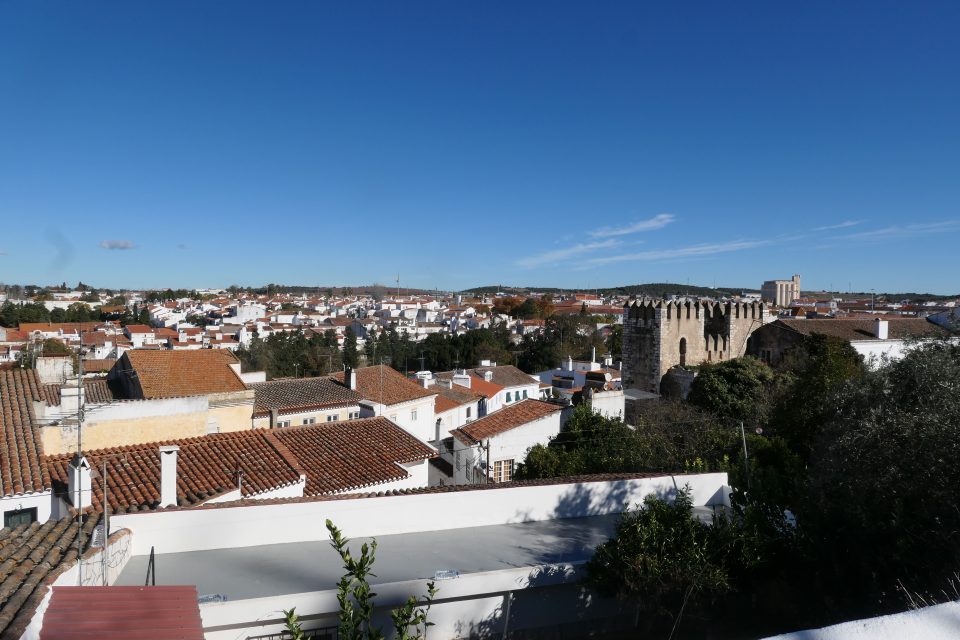
Looking down over the lower part of town 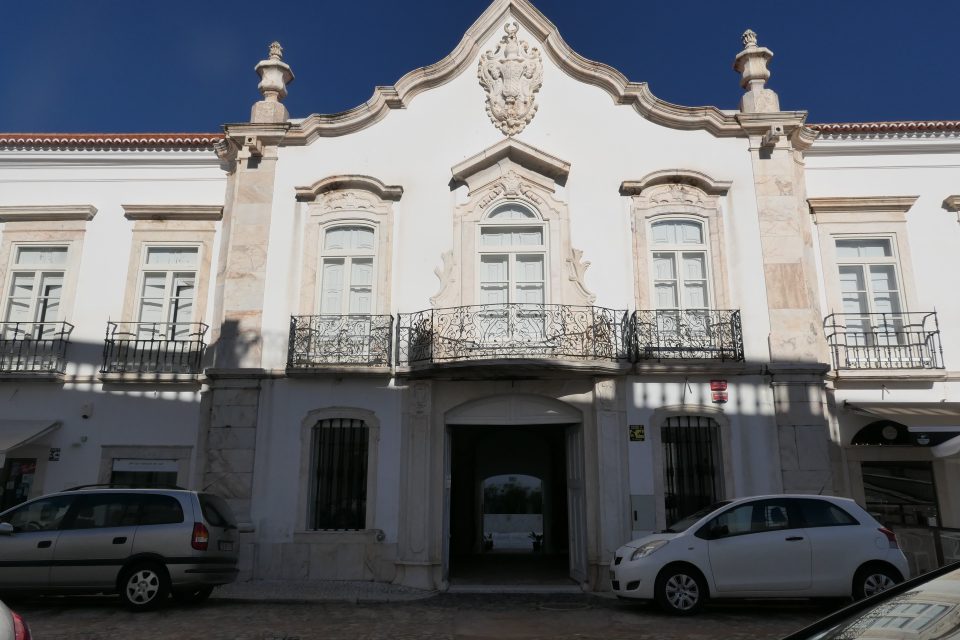
The Doll Museum – adorned with marble like everything else in this town 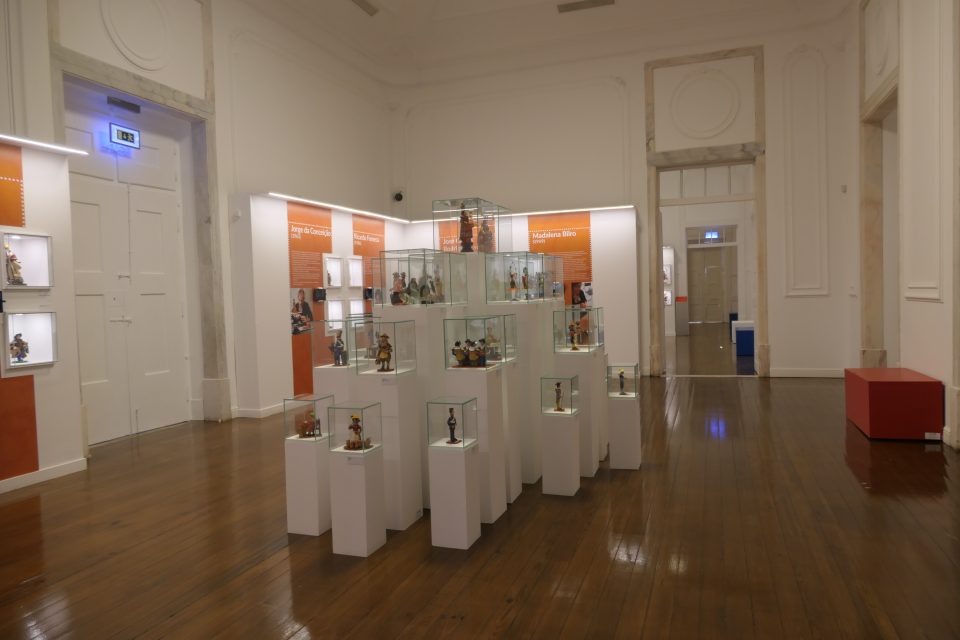
Inside the Doll Museum
In the museum, one room was dedicated to artists from previous generations, that had already passed away. Another room showed the current artists. Although they all make the same type of figures, each has their own unique style of decorating them. The figures show characters in all walks of life. From workers doing mundane tasks, to figures of royalty. One theme was a woman with a blindfold holding a heart. In the movie, we learned that these are depicting Love is Blind. Aside from seeing the dolls in the museum, Estremoz has several workshops scattered throughout the town, where the current artisans make and sell their dolls.
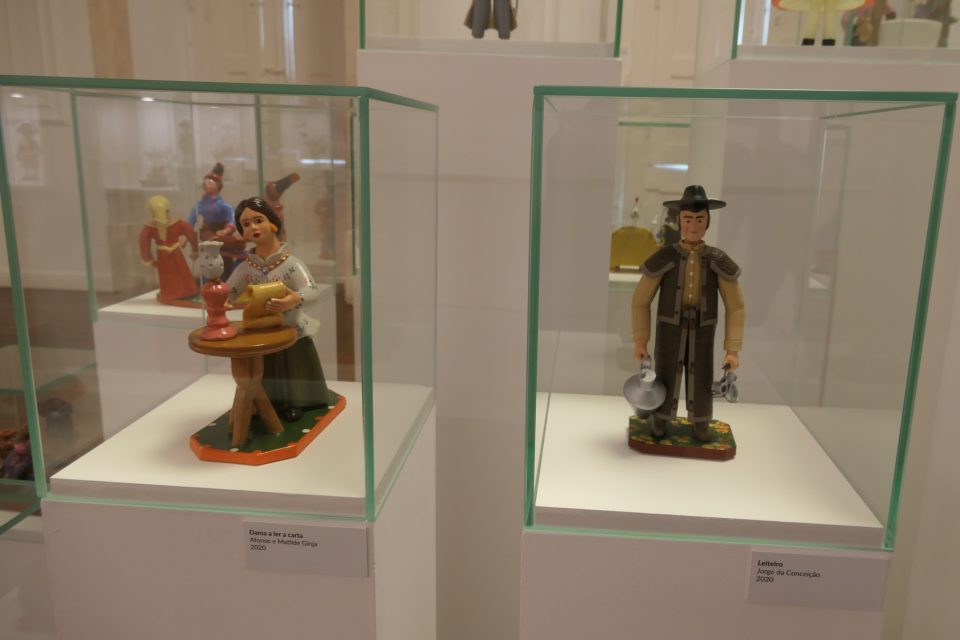
Dolls up close 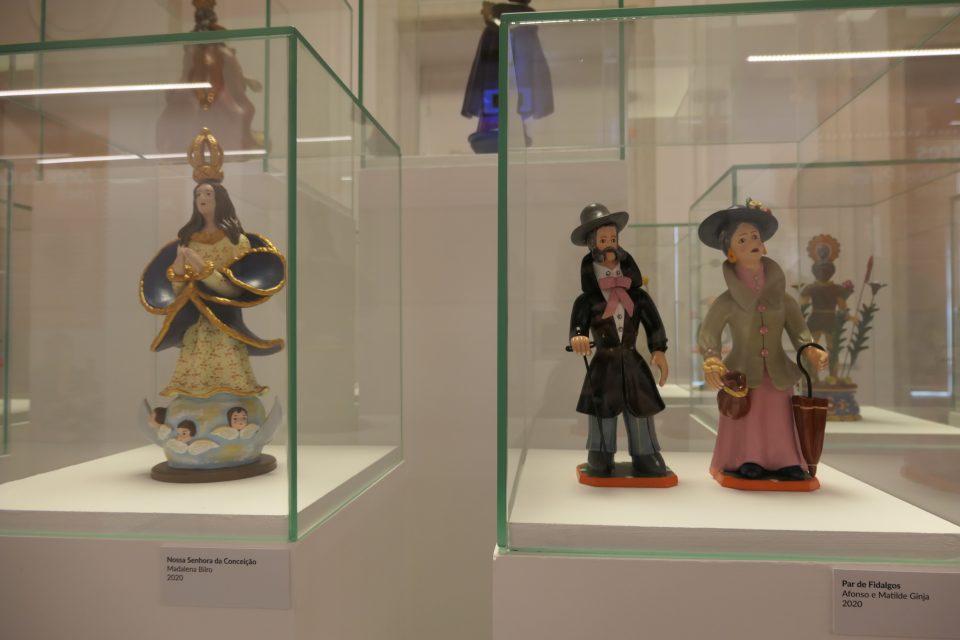
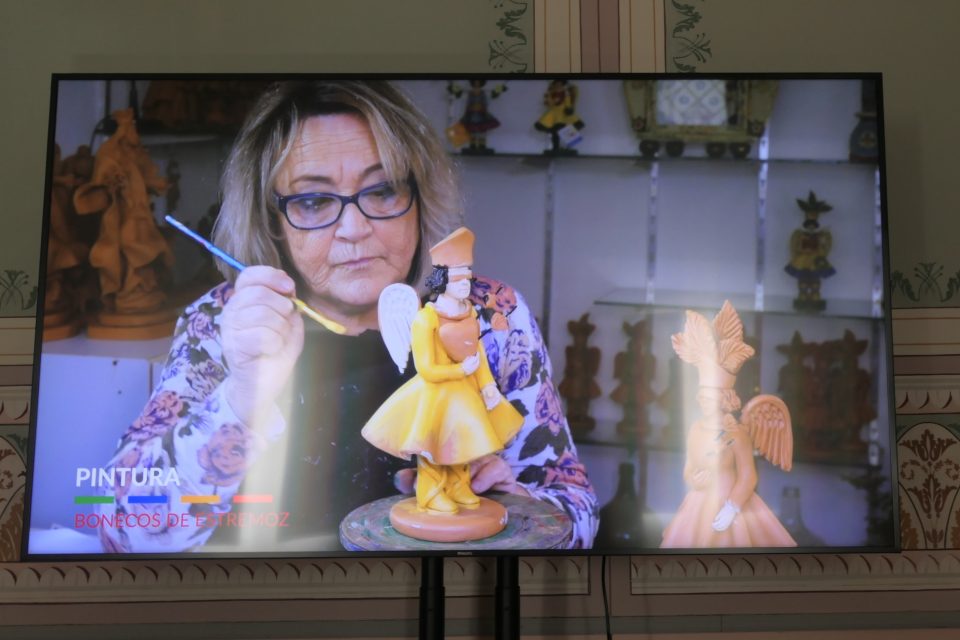
From the video – decorating a Love is Blind doll
While Marvão had been truly special and deserved to be on the 1000 Places to See Before You Die list, we were not as enchanted by Estremoz. It was too large, too unkept – we had seen other places more worthy of the honor. We returned to the car, had our lunch sandwiches in the warmth of the front seat, and then continued on our way to Evora.
Evora is a large city that also once had one of the largest and richest Jewish communities in the country. In the 15th century, the Evora Jewish Quarter had two synagogues, and all that a large community needs – a school, a ritual bath (mikve) and even a hospital.
We drove straight to our Airbnb in Evora and were able to check in early. We dropped off our many suitcases and bags, I did the unpacking while Mark took the car to the parking lot outside the old city. Once again, being in the historic center is problematic for parking, but at least here we could drive up to the door, drop off our things, and then go park. Except for being one flight up without an elevator (hard on my knee and hard on Mark with the suitcases) this place is perfect.
Once we finished cooking, I noticed I was running out of milk and we still had some time before Shabbat to go buy some. The grocery store around the block had a sign “Will be back soon” on the door (thank you Google translate). We went looking for somewhere else. Following Google Maps we walked about 500 meters through the city streets and ended up in front of a municipal building. No grocery store to be found. We just wandered on our own. The streets were crowded with locals, many with shopping bags. Music was coming from an event in the park. The historic district of this city was much livelier and more lived in than other places we visited. The streets are a confusing jumble of rights and left, and we had no luck with a grocery store. Pharmacy, optometrist, travel agency, hardware store, but no groceries. It was getting to be time to light candles, so using Google Maps we made our way back to the apartment. Mark quickly went to the grocery nearby, and the owner really did return and got the milk for my morning coffee. We were now ready to start Shabbat.
Up to now, on Shabbat we have been in places (Lisbon, Porto and Belmonte) where there are Jewish communities with active synagogues. Here in Evora, there no longer is a Jewish community. Mark said the Shabbat prayers on his own. We had a delicious dinner of curried vegetables with tofu on couscous, roasted vegetables and salad. We need to learn to make these one-hour meals at home as well, instead of spending most of Friday preparing.
Tomorrow we will explore Evora further.
